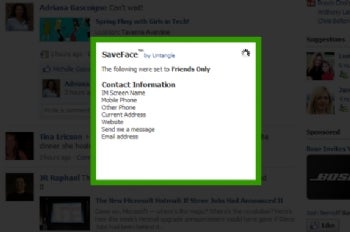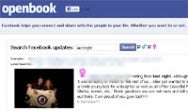In the process of testing NOR, I did a pretty lulzy thing. Remember what I said earlier about the memory controller possibly ignoring the first 4 bits? Well, the NOR device ignores the top 12 bits, since it's only 1 MB in total size. This makes a lot of sense. All the designers have to do is basically not wire up some parts of the address bus. So whether you try to address 0x0 or 0x100000 on the NOR, it looks the same to it.
The problem came about because I attemped to add too many images to NOR; a few 140 KB iBoot images can add up pretty quickly. The last one I added ended up shooting into the range reserved for NVRAM (at the end of NOR) and then "wrapping around" to clobber SysCfg, IMG2, and part of the LLB. =P
Hahaha, that's the equivalent of shooting yourself simultaneously in every vital organ. SysCfg stores your SERIAL NUMBER and other unique, irreplaceable pieces of information. The NVRAM contains information iBoot needs to boot up the kernel. The LLB is the thing that securebl tries to load in order to access everything else on NOR and bootstrap iBoot. As the coup de grace, IMG2 contains information that allows the LLB and iBoot to find where the Img2 data starts, so that they can be loaded. This mistake basically was the equivalent of erasing the entire NOR: Every single piece of information on it was rendered unusable. :P
Luckily, as the first test of my NOR driver, I had made a dump of my original NOR, so I was able to restore the SysCfg information. The interesting bit about all this is that you don't even have to do a restore and lose all your data on the NAND even, if you're clever. What I did was let iTunes talk to DFU mode to get into an iBoot. The iPhone actually has a pretty standard DFU mode, as defined by the USB standard. It reports itself as having the correct class, and OpenMoko's dfu-util manages to get, well, something with it. It successfully uploads the iBSS 8900 file (looking at a USB dump, it looks like just the entire file with the 8900 header, signatures, certificates, etc.) but reports that the firmware is corrupted. So at least it seems to use standard status indicators, etc. However, since I couldn't get dfu-util to work, I just used iTunes and pulled the cable out right after it finishes uploading the iBSS. DFU mode doesn't actually change the NOR, it just loads iBSS into memory and executes it. So after this process is done, iBSS will be loaded and you can connect to it via iBooter.
If you had pulled out the cable just a little too late, you can even see the commands iTunes executed on iBSS in the scrollback, Like setpicture and bgcolor. =P
Using the loaded 1.1.4 iBSS, you can bootstrap the necessary actions to restore your NVRAM from backup. I will talk about that in more detail in a future post. But the upshot is, even if you complete kill your "bootloader", and indeed, everything you can possible write to on the iPhone, you can still get things back to normal. :)
Unfortunately, I probably won't have a chance to work on iPhoneLinux stuff much this weekend. I have already been activated by the Dev Team because you-know-what is happening. Time to hax.
 Pakistan has blocked the popular video sharing website YouTube because of its "growing sacrilegious content".
Pakistan has blocked the popular video sharing website YouTube because of its "growing sacrilegious content". On Wednesday a Pakistani court ordered Facebook to be blocked temporarily in a row over a competition involving caricatures of the Prophet Muhammad.
Some Wikipedia pages are also now being restricted, latest reports say.
There has been no response yet from YouTube. The site was blocked in Pakistan in 2008 - ostensibly for carrying material deemed offensive to Muslims.
Correspondents say it remains to be seen how successful the new bans will be in Pakistan and whether citizens find a way round them.
Facebook said on Wednesday it was investigating the competition on its pages but that the content did not violate its terms.
There have been protests in several Pakistani cities against the Facebook competition.
'Derogatory material' The Pakistan Telecommunications Authority authorities said it had ordered internet service providers to "completely shut down" YouTube and Facebook from being viewed within Pakistan.
It said the move came only after "all possible avenues" within its jurisdiction had been used.
These, it said, included "using regular channels available on Facebook and YouTube to launch [a] protest, to avoid appearances of derogatory material available on their websites".
Such material, the PTA said, had "increased in numbers as time passed by".
"PTA has so far blocked more than 450 links on the internet containing derogatory material," the statement said, adding that its move was an extension of Wednesday's high court order.
Correspondents say it is not clear how far the authorities ban might extend - the order passed in Lahore only concerned Facebook.
Facebook said in a statement on Wednesday: "While the content does not violate our terms, we do understand it may not be legal in some countries.
"In cases like this, the approach is sometimes to restrict certain content from being shown in specific countries."


 0
comments
0
comments





 With cell phones popping up left and right these days, it seems more and more manufactures in the Clone World are trying to outsmart the original proteges. But, to me honest when it comes to anything of luxury, you simply can't fake it. It's almost like trying to compare a $500 bottle of aged wine versus a cheap $5 substitute. While some people that don't drink wine all the time might not know the difference, most anyone with a palate will.
With cell phones popping up left and right these days, it seems more and more manufactures in the Clone World are trying to outsmart the original proteges. But, to me honest when it comes to anything of luxury, you simply can't fake it. It's almost like trying to compare a $500 bottle of aged wine versus a cheap $5 substitute. While some people that don't drink wine all the time might not know the difference, most anyone with a palate will. 



















